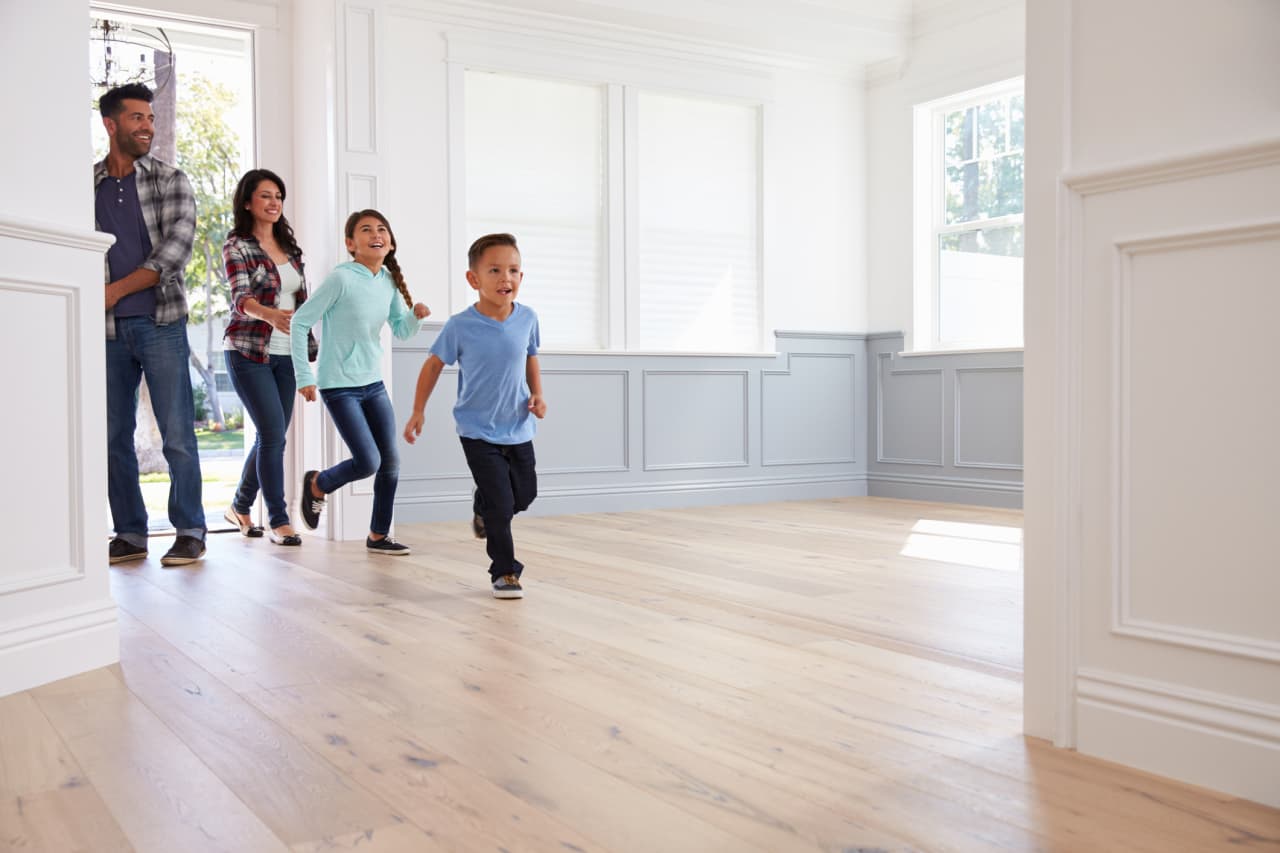People of color have made big homeownership gains — especially this group

People of color made significant gains in homeownership over the last several years, with the Hispanic homeownership rate hitting an all-time high, according to a new report by the National Association of Realtors.
The NAR on Tuesday released its annual Snapshot of Race and Home Buying in America, which detailed homeownership trends within each racial and ethnic group as well as obstacles to buying a home. It found that the homeownership rate among all racial and ethnic groups rose from 63.9% to 65.2% between 2012 and 2022, with some groups making even greater progress toward homeownership.
Though white Americans still had the highest homeownership rate in 2022, at 72.3%, that marked only a small increase from 69.2% in 2012, compared with the headway made by Asian and Hispanic homeowners. The Asian homeownership rate over those 10 years, for example, rose from 57.2% to 63.3%.
The Federal Reserve in March 2022 began a series of interest-rate hikes aimed at curbing sharply rising inflation. Those rate increases coincided with the tail end of the period studied by NAR, though the report didn’t address their potential impact on homeownership rates.
Buying and owning a home is still part of the American dream for some people — and, more importantly, it is a form of forced-savings plan that could also have ramifications for future generations, NAR’s deputy chief economist, Jessica Lautz, told MarketWatch.
“For homeowners, this is their biggest nest egg. They likely will see wealth gains through their biggest asset,” she said. “This allows them to perhaps pass homeownership to future generations, to their children. But also, this is their retirement savings. This is the ability to one day live without a mortgage in their home.”
For many people of color, who are a relatively newer cohort of homeowners compared with white Americans, the advances over the last few years have been meaningful. That’s because private and government actors created racial restrictions on homeownership that shut out people of color, particularly Black Americans, from homeownership for much of the 20th century.
Despite the federal government banning racially motivated lending discrimination in 1968, studies show modern-day redlining persists.
Hispanic homeownership reaches a record high
The homeownership rate among Hispanic Americans hit 51.1% in 2022 — a record high, and up from 45.7% in 2012, the NAR noted. The gain translates to around 3.2 million additional Hispanic Americans buying a home between 2012 and 2022.
One potential reason this group saw significant homeownership gains was the growing population of Hispanics in the U.S., Lautz said. Between 2010 and 2020, the U.S. Hispanic population grew by 23%, according to the Pew Research Center.
The median age for Hispanic homeowners was 43, and the median income was $101,700, the NAR report said. About 51% were first-time buyers. The states where the homeownership rate for Hispanic Americans rose the most over those 10 years were Vermont, Delaware and South Carolina.
Asian Americans lead homeownership gains
Compared with other racial and ethnic groups, Asian Americans saw the biggest gains in homeownership over the last decade. Their homeownership rate rose to 63.3% in 2022, from 57.2% in 2012, equating to roughly 1.5 million more Asian Americans buying a home over the past decade.
Asian Americans are more likely to have family help to purchase a home, such as through a loan or a gift, Lautz said. “They also have a smaller amount of student-loan debt,” she added.
Generally speaking, Asian Americans as a group also have significantly more wealth than other racial and ethnic groups. The median wealth of a typical Asian family was $536,000 in 2022, or nearly twice that of the typical white family, according to Federal Reserve data.
With that said, economic inequality within the broad umbrella of Asian Americans and Pacific Islanders remains vast, as income, educational attainment and poverty rates vary widely across Asian-origin groups in the U.S.
The median age for Asian homeowners was 38, and the median income was $147,900. About 55% were first-time buyers. The states where Asian homeownership was highest were South Carolina, Hawaii and Maryland.
Black homeownership increases slightly
While the Black homeownership rate rose — to 44.1% in 2022 from 42.5% a decade earlier, translating to nearly 950,000 more Black Americans buying a home — the increase was smaller than it was for other groups.
Black Americans hold the highest levels of student-loan debt, with a median debt load of $46,000, the NAR said. Having a heavy student-loan debt burden impacts mortgage eligibility, worsening the racial homeownership gap, according to the Urban Institute.
About four in 10 Black and African-American people owe student-loan debt, almost double the share of Asian and white Americans, the NAR also noted. As MarketWatch has previously reported, this disproportionate debt burden stems from decades of policies that prevented Black households from building wealth.
The typical Black family’s wealth in 2022 was $44,900, about 15% of the typical white family’s wealth, according to Fed data.
The median age for Black homeowners was 47, and the median income was $95,500, according to the NAR report. About 51% were first-time buyers. The states where the homeownership rate was the highest for Black Americans were Mississippi, South Carolina and Delaware.
Source link





